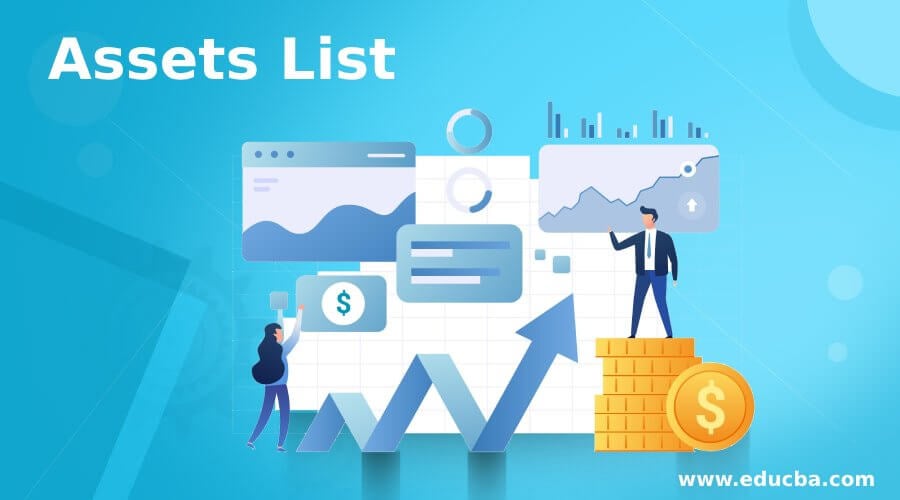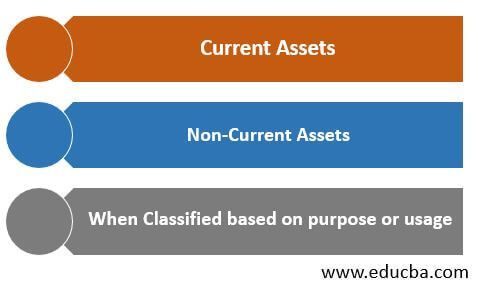Updated July 19, 2023
Introduction to Assets List
When an entity, an individual, a corporation, or government owns or controls an asset, they do it with the expectation of inflow of economic benefit from it in the form of improved sales, reduced expenses, or other forms of cash flow. Depending on the accounting policies followed by the entity, the assets can be revalued based on the fair market value.
The assets that can be easily converted into cash are classified as current assets, while long-term assets that cannot be easily converted into cash are classified as non-current assets.
List of Assets
The following are the components of the list of assets detailing the main assets on the balance sheet. When assets are classified based on their liquidity:
1. Current Assets
- Cash and Cash Equivalents: Cash represents cash in hand, and cash equivalents represent securities that can be easily converted into cash generally in 3 months. Cash and cash equivalents are part of the current assets of the company. The company uses non-current assets to purchase other fixed assets, pay wages and salaries, and meet day-to-day operating expenses.
- Short-term Investments: Investments that are going to mature within a year are classified here. These can be debt as well as equity-based investments.
- Inventory: Inventory is the value of the goods that are lying in the stock of the company. It falls under the current asset heading and is further classified as raw material, work-in-progress, and finished goods.
- Accounts Receivable: This represents cash receivable from debtors for goods sold or services rendered on a credit basis.
- Prepaid Expenses: Prepaid expenses represent a situation where the business pays for services and goods in advance before receiving them.
2. Non-Current Assets
- Land and Building: The entity owning the land or building may use it for office premises, warehousing, renting, or other purposes. The same is shown at its cost in the balance sheet after accounting for depreciation in the case of the building.
- Property, Plant, and Equipment (PPE): These are part of fixed assets in the balance sheet and are tangible or physical in nature. They are held by the business for more than one accounting year and are, therefore, classified under the category of long-term assets. They include plant, machinery, furniture and fixtures, vehicles, etc. They are shown at cost less depreciation in the balance sheet.
- Intangible Assets: Intangible assets are those which do not have any physical being but have economic value, for example, goodwill, patent, copyrights, trademark, etc. When a company acquires or merges with another company, it recognizes goodwill as a significant intangible asset.
- Long-term Investments: Long-term investments are investments that a business holds for more than a year. These investments are classified as non-current assets on the balance sheet.
3. When Classified Based on Purpose or Usage
- Operating Assets: Those assets which help in day to day operation of the business are called operating assets. They include cash, stock, building, warehouse, machinery, equipment, plants, etc.
- Non-operating Assets: They are useful for day-to-day business, but they do generate revenue over the business’s life. Non-operating assets include short-term investments, marketable securities, land, accrued income, etc.
Conclusion
A list of assets classifies an entity’s assets under different heads according to their characteristics and usage in the business. Classification of assets is important because it helps the users identify which assets are forming part of working capital, which are generating revenue, and which are giving long-term benefits to the business.
Recommended Articles
We hope that this EDUCBA information on “Assets List” was beneficial to you. You can view EDUCBA’s recommended articles for more information.





